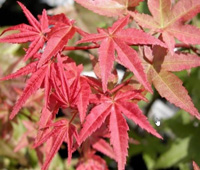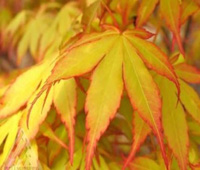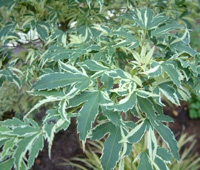Japanese maples dazzle in autumn
-
Elegant, eye-catching and versatile, it’s no surprise that Japanese maples are familiar sights around Marin County. These outstanding trees have been in cultivation since the 1600s in Japan. Due to the genetic variation in the seeds, there are an abundance of unique cultivars: upright to 20 feet or more, cascading low and wide, and multi-trunked specimens that make a bold statement. Leaf shape also varies considerably. Some have intricate, lacy patterns. Others look like the outline of a small hand, thus the botanical name Acer palmatum. Acer japonicum, Acer shirasawanum, and Acer pentaphyllum are also commonly called Japanese Maples.
Kaleidoscopes of color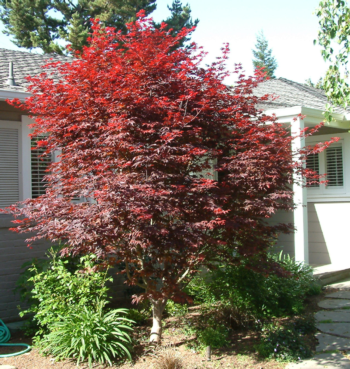 ‘Bloodgood’ Japanese maples make beautiful accent trees for entrances and other focal points. Photo: GardenSoft
‘Bloodgood’ Japanese maples make beautiful accent trees for entrances and other focal points. Photo: GardenSoft
With over 1,000 cultivars to choose from, the choice of size, color and form makes Japanese maples ideal for traditional, modern, and even rustic gardens. Who can resist those foliage colors? Soft spring leaves burst from nude winter branches in March, gleaming chartreuse, burgundy, green, white or even splashes of pink. Many burgundy maples turn soft green in summer, especially when planted in shady settings. Others keep their ruby robes on all summer, turning scarlet in fall. Three varieties that keep their red-hued color all summer are ‘Emperor,’ ‘Fire Glow,’ and ‘Bloodgood.’ One cultivar, ‘Ukigumo,’ has spring leaves in white with light green flecks, turning chartreuse green as weather warms in summer.Fall’s vibrant yellow, crimson or orange make them shining stars in any garden. Graceful branches and twigs take center stage in winter. These deciduous trees change their display in all seasons. Winter gives another opportunity for this gem to shine in your garden since the bare branches have an elegant architectural quality. ‘Sago Kaku’ boasts coral-orange-red twigs and branches when all else in the garden is drab.
Caring for Japanese maples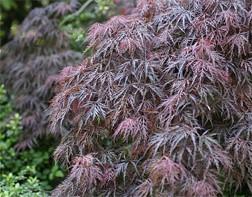 Protect Japanese maples from strong winds and afternoon sun. Photo: courtesy of UC Regents
Protect Japanese maples from strong winds and afternoon sun. Photo: courtesy of UC Regents
Fairly pest free and healthy, Japanese maples require modest care, primarily shaping when young, and pruning in late winter to preserve shape. Prune upper branches to open the canopy to sunlight. Slightly acid, moist soil with good drainage is important. They like neither soggy nor dry roots. For this reason, they respond well to good mulching, and given the shade they create, their water requirements are not as high as one might expect. Shade makes a big difference on water retention. They prefer locations protected from strong winds and afternoon sun. Fertilize in the spring when the trees are putting enormous energy into creating tens of thousands of leaves.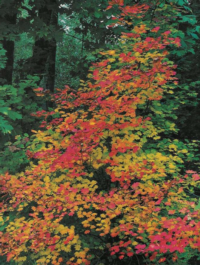 California’s native vine maple is a blaze of color in the fall. Photo: GardenSoft
California’s native vine maple is a blaze of color in the fall. Photo: GardenSoft
What about California’s maples?
Of California's two native maples, big-leaf maple (Acer macrophyllum) is gorgeous, but too large for most gardens, growing to 100 feet. In woods, parks and large gardens, it is an excellent shade tree high enough to create a perfect, shady environment for understory plants. The vine maple (Acer circiatum), on the other hand, is smaller, between a large shrub and a small tree. They have interesting multi-trunk structures and pale green leaves until they turn gold in fall. Slow growing and therefore easier to shape with gentle pruning, vine maples do well in dappled shade with other shade-loving plants and ground covers.
Original text by Julie Monson and Gaius Robinson
Edited by Marie Narlock for the Leaflet

